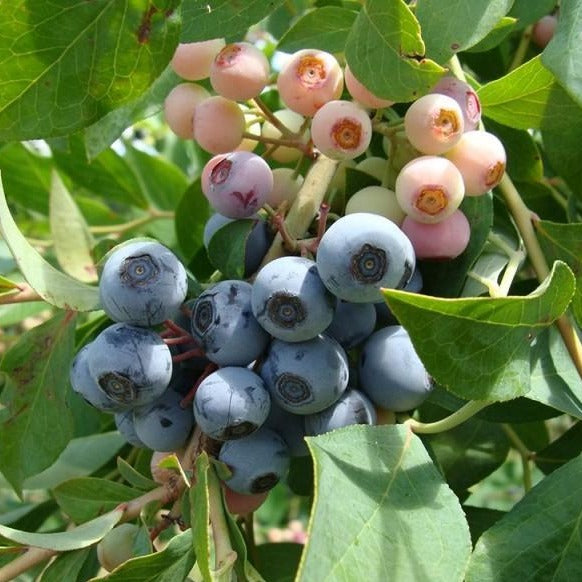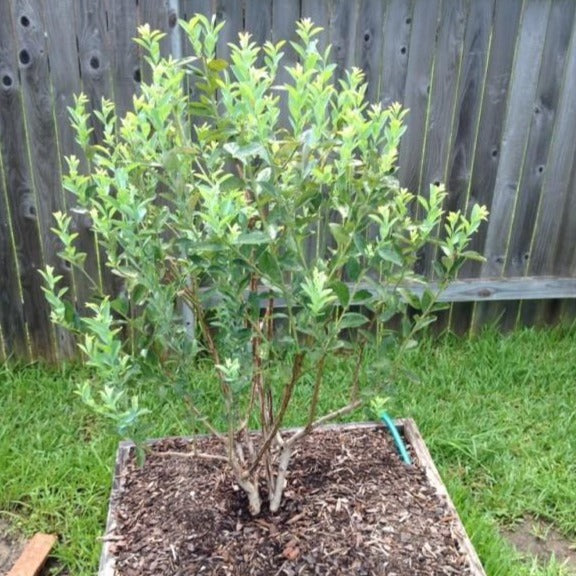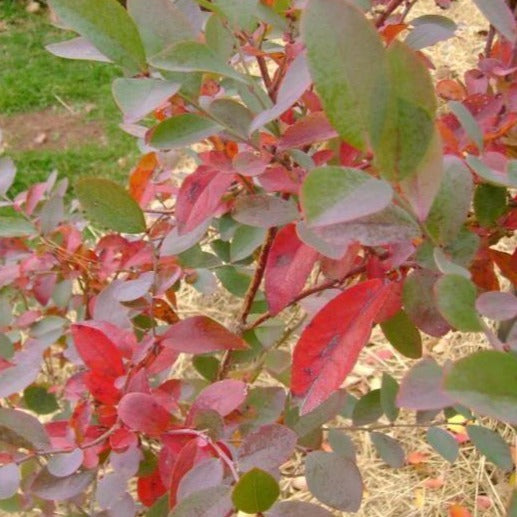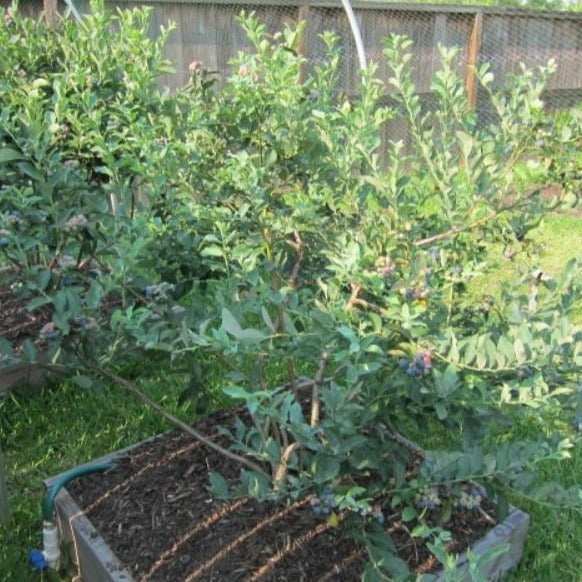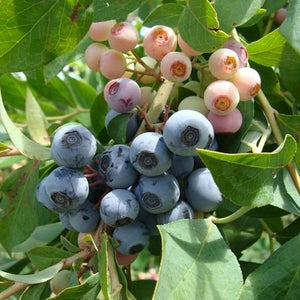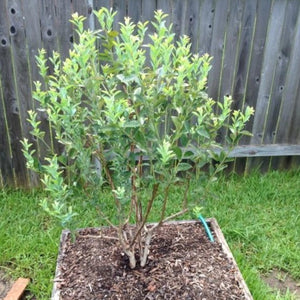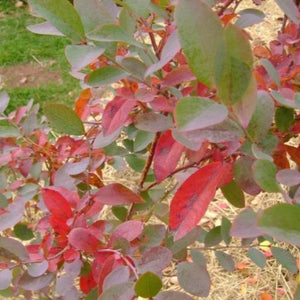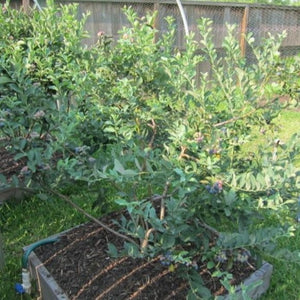Brightwell Blueberry Bush
Product Details
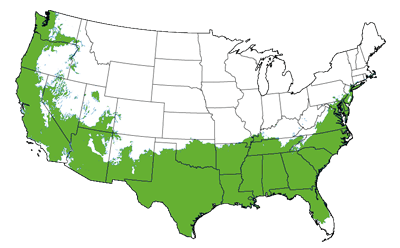 Growing Zones 7-9
Growing Zones 7-9
| Soil Type | Acidic |
| Sunlight | Full, Partial |
| Drought Tolerance | Good |
| Mature Height | 6-10 Feet |
| Mature Width | 6-10 Feet |
| Fall Color | Red |
| Bloom Color | White |
| Shipping Restriction | AZ, CA, OR, WA |
The Brightwell Blueberry plant is a variety of Rabbiteye Blueberry. Rabbiteye blueberries perform well in the Southern US due to their abilities to withstand high heat and tolerate drought. The blueberries are highly productive and grow vigorously while also being adaptable to most conditions.
The Brightwell blueberry bush pairs well with Tifblue. The Brightwell Blueberry has an upright growth habit that produces foliage and fruit vigorously with a height that can reach up to 10 feet! Flowering starts in late spring to early summer. Expect an abundance of ripe fruit in mid to late summer. Green foliage is prominent in the growing season, while fall gives way to a beautiful shade of red. The Brightwell Blueberry Bush requires full sun and acidic soil.
Keep this in mind when choosing a spot to plant your blueberry bush. Cross pollination is essential for blueberry production, so it is advised to plant more than one variety. Brightwell pairs well with Premier. Your Brightwell Blueberry can be trimmed back once it is established. Prune in late winter or very early spring.

Blueberry Comparison Chart - Self-Fertile
Blueberry Comparison Chart - Not Self-Fertile
Are These Blueberry Bushes Self Pollinating?
They are self fruiting but will produce bigger yields when pollinated with the Premier, Climax or Tifblue variety.
Are These Blueberries Sweet?
A punch of sweet juice is packed in each and every berry.
Where To Plant
In acidic soil with full sun exposure in grow zones 7-9.
When planting your Brightwell Blueberry be sure to choose the right location and conditions for your new plant to thrive. Spring and Fall are ideal times to plant. However, if you avoid extreme temperatures you can plant your Blueberry almost any time of the year.
Blueberry shrubs thrive in full sun and well-drained, moist, acidic soil. If you have alkaline soil, be sure to amend your soil. To acidify your soil amend with compost, elemental sulfur, or use fertilizers specific for acid loving plants. Mulching with pine straw or pine bark will help over time as they begin to break down, but are not an immediate solution. To improve drainage in something like a heavy clay soil, add compost and be sure to loosen up the soil well before planting. Water deeply when planting and 2-3 times weekly for 3 months while your Blueberry plant is establishing. During the growing and fruiting seasons, a blueberry will do best if the soil is kept moist. Adding a layer of 2 to 3 inches of mulch is highly recommended for Blueberry bushes. Mulching helps to maintain soil moisture and gives added protection during extreme temperatures. Fertilize in spring with a balanced, slow release fertilizer like 10-10-10, preferably for acid loving plants. Blueberries grown in containers will need fertilized 3 or 4 times per year during the growing season as nutrients leech out of the pot when you water. Prune your Blueberries in late winter to remove any dead, dying, or crowded branches and to maintain size. The Brightwell variety requires a pollinator, like Premier, to produce a good crop of berries.
The best way to prevent disease and pests is by providing the appropriate care for your plants. Proper location choice, watering, and fertilization are the keys to your success. The biggest pests of blueberries is birds. You can put up bird netting to protect your crop. If positioned properly, this is an extremely effective deterrent. Most insect pests feed on the leaves of blueberries. You can treat most of these pests naturally with horticultural oil, neem oil, or insecticidal soap. Blueberry Bushes can occasionally encounter fungal issues. Generally, treating after infection isn't extremely effective, so if you have problems yearly treat in early spring with fungicides to prevent infection. Neem Oil is an organic method of treating and preventing some fungal diseases and pests. The entire shrub must be coated in order for this method to be effective.
Blueberry bushes make a great addition to any landscaping. They can be used as a hedge, put into a mass planting with multiple varieties, or even used as a specimen plant. As long as their basic needs are met, blueberries will thrive wherever you decide to add them to your landscape. These bushes look great when they are planted 5 feet apart in a row.
Learn when to prune your flowering shrubs.
For additional options, be sure to browse our Blueberry Bushes, Dwarf Tree and Fruit Trees collections.


